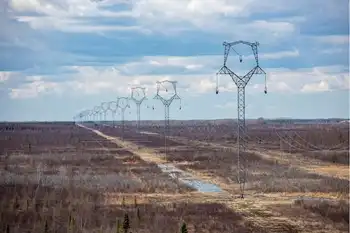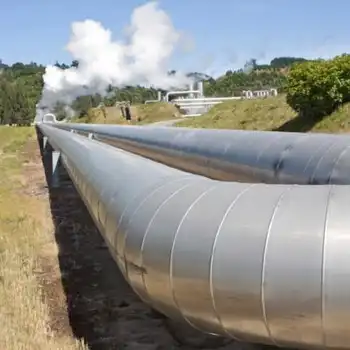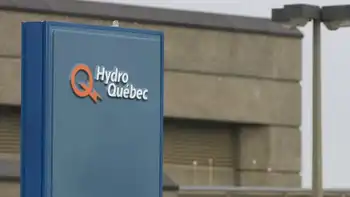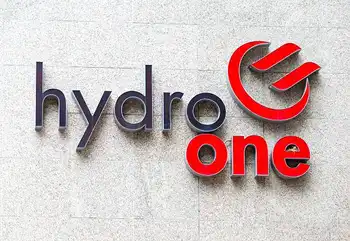Constellation to build 300kW solar power system
By Southern Maryland Online
Arc Flash Training CSA Z462 - Electrical Safety Essentials
Our customized live online or in‑person group training can be delivered to your staff at your location.

- Live Online
- 6 hours Instructor-led
- Group Training Available
When the installation is complete, anticipated for late 2008, it is expected to be the first of its kind among Maryland State agencies.
“Maryland is quickly emerging as a national leader in renewable energy, and with projects like this one at Maryland Environmental Service, we will move forward toward making our State a model for the rest of the country,” said Governor O’Malley. “The unique partnership with Constellation’s Projects and Services Group provides the added benefit of advancing renewable energy without the prohibitive burden of upfront, taxpayer-funded capital expenditures.
“Maryland will continue to invest in renewable energy resources, including the use of Maryland’s share of the $38 million generated in the nation’s first mandatory cap-and-trade auction to reduce greenhouse gas emissions.”
Governor OÂ’Malley referred to MarylandÂ’s participation in the first market-based, mandatory cap-and-trade program in the U.S. to reduce greenhouse gas emissions. The ten participating states have committed to cap and then reduce the amount of CO2 that power plants in their region are allowed to emit, limiting the regionÂ’s total contribution to atmospheric greenhouse gas levels. The Regional Greenhouse Gas Initiative (RGGI) auction this week generated more than 51.7 million requests for allowances, exceeding the available supply.
“Maryland Environmental Service has always been at the forefront of projects that protect and enhance the State’s air, land and water resources,” said James M. Harkins, Director of Maryland Environmental Service. “Clean, renewable solar energy is going to be an important part of our State’s energy future, and we look forward to working with Constellation Energy to demonstrate that solar energy is a practical alternative source of power for Maryland.”
Over the 15 year term of the agreement, the electricity generated by the solar power system is estimated to displace the release of more than 10 million pounds of carbon dioxide emissions, when compared to a coal fired electric generating unit. That is the equivalent of removing more than 800 vehicles from the road or powering 600 homes.
The installation will serve as a solar educational facility, in addition to generating electricity equivalent to approximately 50 percent of MES headquarters annual electricity requirement.
“Constellation Energy is pleased to be working with Maryland Environmental Service and the State of Maryland to support solar energy innovations,” said Greg Jarosinski, President of Constellation Energy’s Projects & Services Group. “Pairing the renewable energy development expertise of Constellation Energy with Maryland’s progressive State government partners will result in an environmental and energy milestone for a state that is already among the national leaders in support of renewable energy.”
The system will be comprised of two different types of solar technologies, both thin film and crystalline photovoltaic solar cells. The lightweight and flexible thin film panels will be applied directly to the building rooftop. The crystalline silicon panels will be deployed on the grounds of the Maryland Environmental Service near Interstate 97.
Under the terms of the agreement, Constellation EnergyÂ’s Projects & Services Group will construct the approximately $2 million facility, own the energy assets, and sell the electricity it generates on-site to Maryland Environmental Service under a 15-year power purchase agreement. This structure enables organizations to undertake on-site renewable energy generation without a prohibitive, upfront capital expenditure. The installation also qualifies for the State of Maryland Production Tax Credit of $0.0085 per kilowatt hour.
The Solar Renewable Energy Certificates (SRECs), which account for the environmental benefits of the solar project, will be owned by Constellation EnergyÂ’s Projects & Services Group, which will use them toward compliance with Maryland's Renewable Energy Portfolio Standard.
Since 2007, Constellation EnergyÂ’s Projects & Services Group has developed nearly 5 megawatts of on-site solar energy projects in five states. Constellation EnergyÂ’s Projects & Services Group has also developed geothermal heating and cooling projects at sites in Maryland for the U.S. Army and U.S. National Park Service, and brokered the purchase of 70,000 megawatt hours annually of wind energy by the Washington Suburban Sanitary Commission in Laurel, MD.
Governor O’Malley announced a series of planned initiatives this summer, including a continued partnership with metropolitan, county, and municipal governments using the bonding authority of MES to develop smaller scale “peaking plants” to bring new plants online as soon as possible. In order to become a national leader in renewable energy, Governor O’Malley announced that Maryland will offer long-term contracts for clean, renewable power, to accelerate the arrival of more commercial scale projects like Delaware’s off-shore wind farm.
In addition, Governor OÂ’Malley proposed an acceleration of the deployment of so-called smart meters and smart pricing for consumers to reduce consumption and the provision of assistance to low-income families who are struggling to afford energy prices, during difficult economic times.
Created in 1970, Maryland Environmental Service is an independent State agency that works with both government and private sector clients to protect the State's air, land and water resources. Among the 582 current MES environmental projects are water and wastewater operations, solid waste facilities, and dredged-material management projects on Hart Miller and Poplar Islands.











